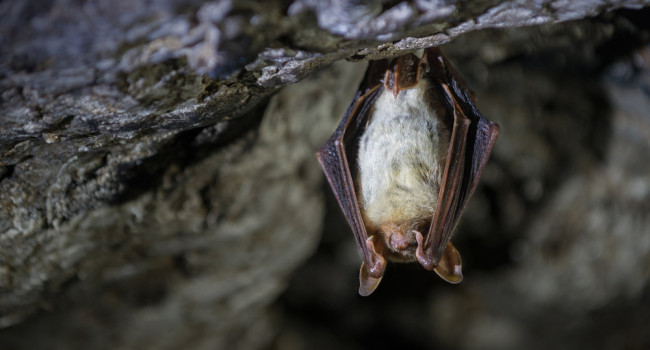Travel far, breed hard, die young! The surprising lifestyle choices of Short-eared Owls
16 Jan 2024 | No. 2024-02
'Travel far, breed hard, die young' – while this might sound like a hedonistic rock-and-roll lifestyle, a new study by researchers at the British Trust for Ornithology (BTO), with collaborators in Iceland and Spain, reveals this is how Short-eared Owls live their lives. Describing the incredible and surprising movements of Short-eared Owls across Europe and south into Africa, these new results underline a need to plan conservation action for this species at larger scales than previously considered.
The Short-eared Owl, whose appearance and disappearance from regions has fascinated birdwatchers and ecologists for decades, was a bird for which we lacked key information on movements and the degree of connectivity between populations. A new study by BTO researchers, along with the University of Iceland and the Spanish National Research Council (CSIC), just published in the journal Ibis, fills this important knowledge gap and provides new evidence that will enable us to better protect and conserve this enigmatic species.
The Short-eared Owl has an extensive, but declining, distribution, across which it is predominantly a specialist predator of small mammals. The abundance of its favoured vole prey can vary markedly, both in time and space, making these rodents an unpredictable food resource. While Short-eared Owls can switch to other prey when voles are not available, their more common response is to move to other areas, resulting in irruptive or nomadic movements. Studying these movements has proved challenging, but advances in tracking technologies have enabled BTO Senior Research Ecologist John Calladine and colleagues to collect new information.
The movements of 47 Short-eared Owls, from multiple European locations (Iceland, Scotland, and Spain), were tracked with GPS devices. The study reveals an unexpectedly large degree of movement in the tracked individuals, with some of the birds tagged in Scotland and Spain travelling widely across Europe and North Africa, and one bird tagged in Iceland travelling to Britain. Nine individuals of these 47 were monitored while nesting over two seasons, and the distances between nest sites used by the same individuals in sequential years ranged from 41 to 4,216 km. As far as we are aware, these represent some of the longest known distances between nest sites by any bird.
Of two females tagged while nesting just 2 km apart on the Isle of Arran (Scotland) in 2021, one went on to breed in northern Norway in 2022 and the other to the Pechora Delta in Arctic Russia. Incredibly, another female tagged at its nest in Scotland in 2017 – bred twice in 2018, once in Scotland and again in Norway. However, travelling so widely to find places where there is sufficient prey where large broods can be reared does have its consequences – less than half the adult birds survive from one year to the next.
So, rather than leading a hedonistic lifestyle, these birds are actually behaving selflessly. Their extensive travel to find enough voles to rear the next generation of owls has a knock-on effect on the condition of the individual and its chances of surviving for another year.
Out of 18 successful breeding attempts by 14 tagged females, in all but two instances the females departed before the youngest chick was fully independent, leaving the male to finish rearing the brood. Again, this is new information that was not even suspected before this study.
The types of movements recorded in this study, and the scale of these, implies that there are not distinctly separate populations of Short-eared Owls across much of Europe. Rather, there is a single potentially integrated population across most of the range, albeit with some comparatively more – but not completely – isolated populations (such as that in Iceland).
John Calladine, BTO and lead author on the research paper, said "This new knowledge has significant implications for attempts to protect and conserve this species, and underlines a need to collect information on Short-eared Owl populations from sufficiently wide geographic scales and/or over the long term. Importantly, conservation action for the birds will need to be on a similarly wide scale."
John continued "This study was only possible because of the generosity of those individuals and organisations who provided the funding necessary to purchase and deploy the tracking devices fitted to these amazing birds."
Neil Morrison, of the Tay Ringing Group and who has been key to the study right from its conception, said "I've been studying these owls for decades and thought I knew what they did. How wrong could I have been! To think that owls breeding in 'my glens' could then go on to breed in the Arctic or try and cross the Sahara –, who would have thought that! It's been a real privilege to be able to follow these birds in such detail. Now we have the knowledge to help ensure they continue to amaze us into the future."
Publication details
The paper detailing this new work is:
Calladine, J., Hallgrimsson, G.T., Morrison, N., Southall, C., Gunnarsson, H., Jubete, F., Sergio, F. & Mougeot, F. (2024). Remote tracking unveils intercontinental movements of nomadic Short-eared Owls Asio flammeus with implications for resource tracking by irruptive specialist predators. Ibis https://onlinelibrary.wiley.com/doi/full/10.1111/ibi.13304.
- Please email press@bto.org for a copy of the paper for media use.
Images
Images are available for use alongside this News Release. These can be downloaded from this link for which you will need to enter the password: sheow_2402
- Alternatively, please contact press@bto.org quoting reference 2024-02.
Further information
- More information about the history of this work is available on our Short-eared Owl tracking project page.
- Facts and figures about Short-eared Owl populations in the UK can be found on our Short-eared Owl BirdFacts page.
- Learn more about the biology of the Short-eared Owl on our Project Owl pages.






Share this page